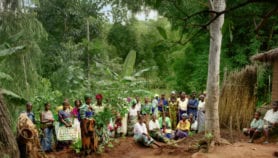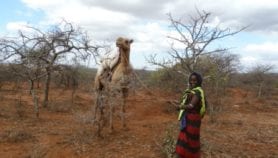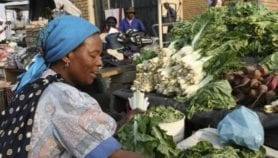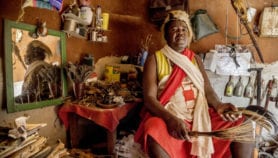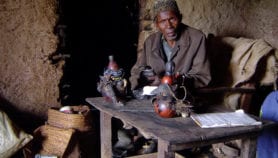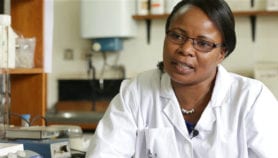Send to a friend
The details you provide on this page will not be used to send unsolicited email, and will not be sold to a 3rd party. See privacy policy.
William Critchley and Kithinji Mutunga say that programmes supporting innovation by small farmers have much to offer, but warn that such programmes should not try to accomplish too much too quickly.
William Critchley is at the Vrije Universiteit in Amsterdam, and Kithinji Mutunga is at the Ministry of Agriculture in Nairobi, Kenya.
The concept of indigenous knowledge (IK) contains tremendous development potential. But the question remains: how can this potential be put to work?
It is much easier to admire what is special in a local practice and document these case studies in a lyrical style, than it is to prescribe ways of moving forward. Indeed many IK proponents rest their case at that point, sometimes provoking negative reactions in a local setting. To go further requires a sense of direction, strategy and application.
One much-discussed possibility for translating rhetoric into reality is through a particular form of IK, namely that known as ‘farmer innovation’. This is the process under which farmers themselves develop ways of, for example, improving crop varieties through careful selection of seeds, harvesting rainwater from roads, or producing new pesticidal concoctions — often without any outside help.
Although the process is ancient, it has only recently obtained wide recognition. Indeed, in the context of small-scale farming in the developing world, farmer innovation has recently become the latest buzzword within the IK fraternity. A logical and convenient solution seems to have appeared miraculously before our eyes! Press the right button and farmers, reassuringly full of IK, will generate their own answers to the problems they face.
But this immediately raises a new question: if local innovation automatically leads to solutions, why are we still looking at so many familiar problems?
Accepting that there is much merit and power in local innovation, we propose two causes for this apparent contradiction. First of all, local innovation does not automatically leap ahead under its own momentum; it requires careful nurturing, support and guidance. Secondly, such innovation is not in itself a panacea, even when the process works well; it is only one piston in the engine of rural research and extension.
These two factors underscore the need for carefully thought out and implemented programmes to stimulate farmer innovation. They also emphasise the need to encourage the spread of innovations — indeed of the concept of innovation itself.
There is no room here to discuss in detail the reasons why many recent and novel farmer innovation initiatives have worked well. It is sufficient to suggest that:
- the central concept tends to be attractive at all levels, from farmers, through to field workers and senior government officials;
- a wealth of imaginative innovators is to be found in most communities; and
- technical innovations that work tend, by definition, to be locally appropriate.
Nor is there space for an exhaustive explanation of the hurdles that face attempts to scale up programmes to support farmer innovation. Here we can simply mention the need to redefine roles and change attitudes amongst scientists, to ensure cost-effectiveness of the innovations and the programme, and to consider appropriate institutional support of such initiatives.
But there is one potential hazard that no such programme — to our knowledge — has yet managed to deal with adequately. This is the resentment that can develop towards farmer innovators, the very individuals on whom the success of such interventions depends.
The danger is that new programmes designed to boost farmer innovation will end up repeating the mistakes of earlier projects that lavished excessive attention on ‘contact’, ‘model’ or ‘master’ farmers. The problem with these approaches was that the ‘trickle-down’ theory of technological advancement — namely that such individuals would pass their experience down to others — simply didn’t work.
Rather than acting as sources of information for others thirsty for such knowledge, these farmers tended to keep the knowledge to themselves. Common sense suggests why this happened. No one likes those who are treated as being better than the rest, particularly if such individuals are favoured by frequent visits from aid agency project personnel, and liberally showered with ‘rewards’.
Although the situation is not yet serious in programmes intended to promote farmer innovation, there are already numerous anecdotes about jealousy and acrimony. There is, for example, the farmer innovator in Kenya who had his fence cut down, a woman innovator in Uganda who has her bananas regularly stolen, a prominent individual in Burkina Faso who has been socially ostracised, and a forest protector in India whose buffer zone was set on fire. These may be the exceptions rather than the rule. But the problem cannot be ignored.
Our experience of farmer innovation programmes in East Africa has led us to certain recommendations on how to avoid recreating a ‘favoured farmer syndrome’, and to help ensure that these innovators don’t fall foul of their comrades.
First, individuals who are already so exceptional that they are on the very margins of society should not be selected as innovators, as they probably already attract ill feeling. Select innovators to whom neighbours can relate to as role models.
Second, don’t provide the individuals you have chosen as innovators with large amounts of free materials. The recognition already provided should be (and usually is) sufficient incentive.
Thirdly, programmes need to ‘rotate’ farmers that are the centre of attention. In other words, there needs to be a deliberate strategy of moving on from the original innovators as learning points to others who have either adopted their innovations, or are developing further innovations from them.
Small farmer innovation programmes have proved promising in many countries, and certainly deserve continued support. But it is important to resist the temptation to fly the kite too high, and too soon.
Until we have truly road-tested the methodology — and the ‘favoured farmer syndrome’ is just one example of the way in which things can go wrong — we should remain modest in our ambitions. Enthusiasm for a good idea can quickly turn sour unless results keep pace with investment.
Further reading:
Critchley W et al (1999) Promoting Farmer Innovation. Sida’s Regional Land Management Unit, ICRAF, Nairobi.
Mutunga K & Critchley W (2002) Farmer’s Initiatives in Land Husbandry. Sida’s Regional Land Management Unit, ICRAF, Nairobi.
More on Indigenous
News
Study assesses use of plants in antimalarial therapies
[COTONOU, BENIN] Traditional healers in Benin possess sophisticated knowledge regarding the treatment ...29/01/13


